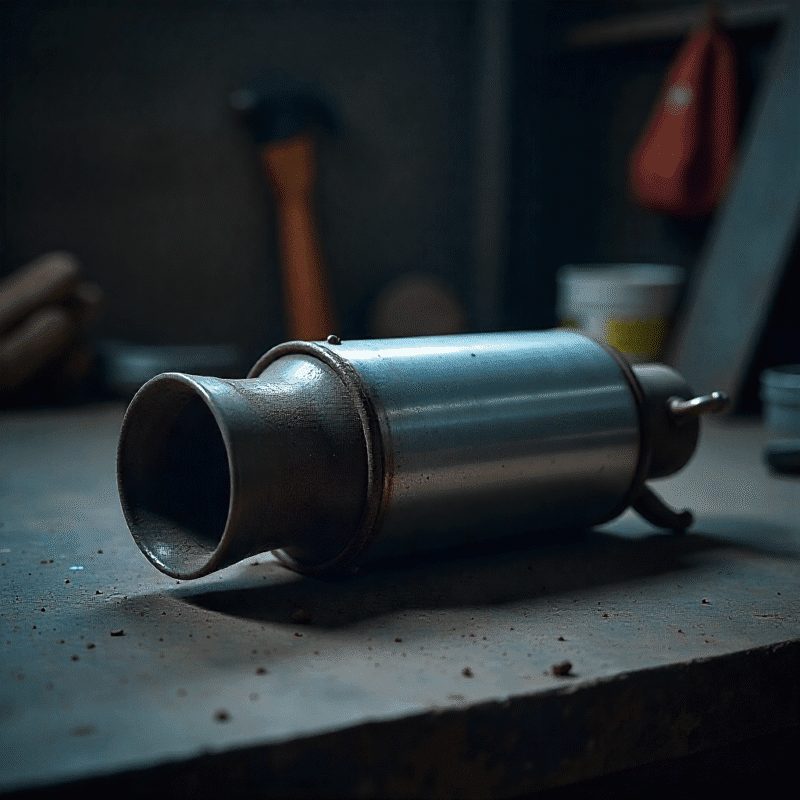Have you recently had your car serviced and left behind that old exhaust component without a second thought? Or maybe you have an aging vehicle collecting dust in the garage? Before you discard what seems like a useless piece of metal, it’s worth reconsidering—because you might be throwing away something that could earn you a significant amount of cash.
Valuable Metals in Disguise
Hidden inside certain emission control components is a mix of precious materials. These items, although looking unremarkable from the outside, often contain minute amounts of rare and costly elements like platinum, palladium, and rhodium—substances typically found in luxury goods and industrial applications.
In fact, a standard piece of this equipment might include:
-
1–5 grams of platinum
-
2–7 grams of palladium
-
0.5–2 grams of rhodium
With these metals reaching exceptionally high values per gram on the global market, one seemingly worthless auto part could fetch anywhere from €50 to €600—or even more.
Why Prices Vary
Even seemingly identical parts can differ in market value. Several factors influence how much you’ll get:
-
Vehicle origin and engine specs: Different engine types and production years result in varying metal content.
-
Age of the component: Older models (especially from the 1990s to mid-2000s) often contain more metal than newer ones, due to changes in manufacturing techniques.
-
Condition: Damaged parts are less valuable, especially if heat or wear has degraded the internal material.
-
Metal market trends: As prices for these metals fluctuate daily, so do buying offers.
-
Buyer honesty: Some purchasers may offer less than market value, hoping sellers are unaware of what they own.
How to Estimate the Value
There are several ways to gauge how much your part might be worth:
-
Look for serial numbers: Many of these components are marked with a code. This number can be used to identify and price the part.
-
Use vehicle details: If no code is visible, information like make, model, engine size, and emission category can help a buyer estimate its value.
-
Shape and type: These components vary—some are ceramic-based, others metallic or hybrid. Ceramic ones typically carry higher value due to their composition.
Where to Sell
If you’re looking to turn your old part into money, here are the main options:
-
Specialty buyers: They usually provide accurate appraisals and better prices, though you might need to visit them in person.
-
Online platforms: Selling through classified sites can yield higher offers but takes time and effort to manage communication and delivery.
-
Auto recyclers: Convenient if you’re scrapping the whole car, though often they’ll offer less for the part alone.
-
Workshops: While replacing the part, you can ask to keep the old one. However, shops don’t always offer competitive prices, and some may not even ask if you want it back.
Real-Life Earnings
-
One seller managed to recoup nearly half the cost of a new part by selling the old one independently.
-
Another person removed a valuable part from a hybrid vehicle and sold it separately for more than half the value of the entire car.
-
Someone else sold two dusty components from their garage and unexpectedly made enough to purchase new tech.
Tips to Maximize Your Return
-
Always ask to keep old parts: It’s your property—make sure it returns to your hands.
-
Compare offers: Reach out to multiple buyers. The difference in offers can be quite substantial.
-
Avoid tampering: Never try to extract metals yourself; it’s dangerous and lowers the value.
-
Follow market prices: Metal rates change—selling when prices spike could boost your return by up to 20%.
-
Keep relevant documents: Proof of originality can increase buyer trust and the final payout.
Industry Facts
-
This market is growing fast, with recycling of these parts seeing double-digit annual growth.
-
Modern tools like portable analyzers can instantly assess metal content.
-
Parts from certain regions may contain more valuable material.
-
Seasonal patterns influence prices—early summer tends to bring better rates.
Environment Matters Too
Recycling these components isn’t just about money. It also supports environmental efforts by:
-
Reducing demand for harmful mining practices
-
Recovering scarce resources
-
Preventing hazardous materials from reaching landfills
Be Aware of Scams
As value rises, so does the number of dishonest operators. Watch out for:
-
Very low initial offers
-
No physical business address
-
Lack of transparency on pricing
-
Suspicious handling of the weighing process
Legal Aspects to Know
-
Buyers may ask for ID and vehicle registration to ensure the part is not stolen.
-
Regular, large-scale sales might count as business activity—tax rules could apply.
-
Shipping multiple units may require permits depending on your region.
Final Thoughts
Before tossing aside what appears to be scrap, take a moment to research. That part might just hold unexpected value. Selling it responsibly not only puts money in your pocket but also contributes to sustainability. Information is your best ally—do a little homework, and you might be surprised by what your old car can still give back.

